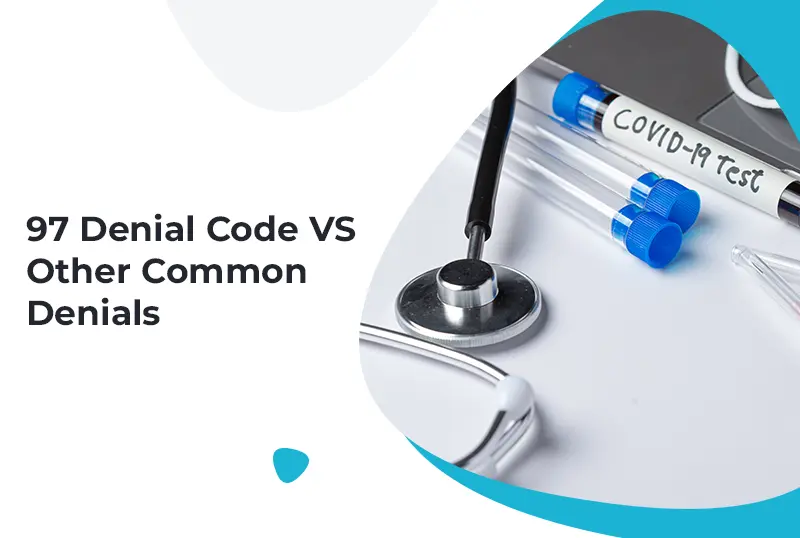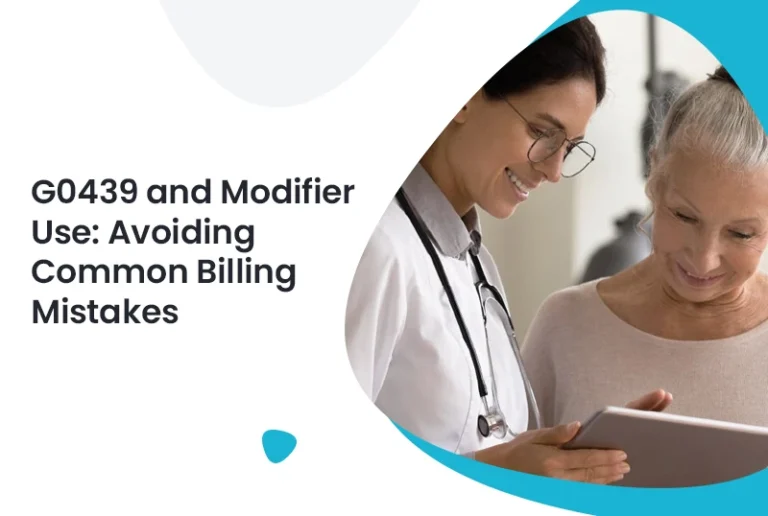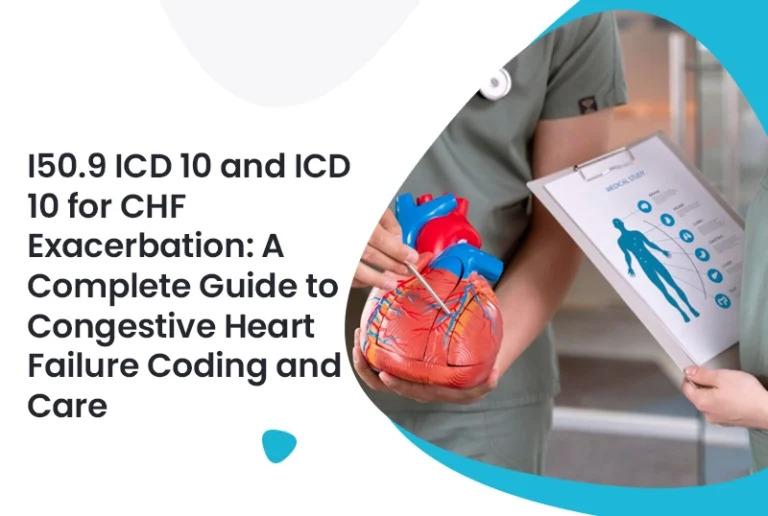97 Denial Code vs. 45 Denial Code
- 97 Denial Code: The service is bundled with another procedure and not separately reimbursable.
- 45 Denial Code: The billed amount exceeds the payer’s allowable charge, meaning the provider must write off the difference.
Key Difference:
97 denial is about bundled services, while 45 denial means you billed more than the insurance company allows.
97 Denial Code vs. 22 Denial Code
- 97 Denial Code: The service is considered part of another paid procedure and won’t be reimbursed separately.
- 22 Denial Code: The procedure wasn’t deemed medically necessary, so it wasn’t covered at all.
Key Difference:
97 denial is about how services are grouped, while 22 denial means the payer didn’t think the service was necessary.
97 Denial Code vs. 109 Denial Code
- 97 Denial Code: A bundled service—already covered under another payment.
- 109 Denial Code: The service isn’t covered at all under the patient’s plan.
Key Difference:
97 denial says, “This was already paid for!”, while 109 denial says, “We don’t cover this at all!”
How to Fix a 97 Denial Code
Not all 97 denial codes are final—sometimes, a correction or appeal can get your claim approved. Here’s what you should do:
Step 1: Check the Explanation of Benefits (EOB)
Before panicking, review the EOB from the payer to understand why the service was denied. Was it a valid bundling issue, or did they deny it incorrectly?
Step 2: Verify Bundling Rules
Check the National Correct Coding Initiative (NCCI) edits to see if the denied service should have been reimbursed separately. Not all bundled services should be automatically denied.
Step 3: Use the Right Modifier
Modifiers can be lifesavers when trying to separate bundled services. Here are two key ones:
- Modifier 25 – Used when an E/M service is distinct from a procedure performed on the same day.
- Modifier 59 – Used to show that two procedures performed during the same visit should be separately reimbursed.
Applying the correct modifier can turn a denial into a payment.
Step 4: Appeal the Denial (If Needed)
If you believe the denial was incorrect, you can file an appeal with supporting documentation, including:
- A letter explaining why the service should be reimbursed separately.
- Medical records show the necessity of both procedures.
- A reference to CPT guidelines or payer policies supporting the claim.
Step 5: Train Your Billing Team
Preventing denials is better than fixing them. Training your medical billing services team to recognize bundling issues upfront will save time, frustration, and lost revenue.
Preventing 97 Denial Code Issues in the Future
To avoid repeated denials, follow these best practices:
- Know payer-specific bundling rules – Each insurance company has different bundling policies, so staying updated is crucial.
- Use modifiers when necessary – If a service should be billed separately, make sure you’re applying the correct modifier.
- Check NCCI edits before submitting claims – The National Correct Coding Initiative can help determine whether services are billable together or separately.
- Train your team – Knowledge is power! Ensuring your billing team understands bundling reduces preventable denials.
- Review claims before submission – A simple pre-submission check can catch errors before they turn into denials.
With the right preventive measures, you can keep denials to a minimum and streamline reimbursements.
Conclusion
Denial codes might be frustrating, but they do not have to be a never-ending battle. Understanding why claims get denied and how to correctly bill for services can make a huge difference in getting paid faster.
97 denial code could be a nightmare, but if you are appropriately documenting, have the right modifiers, and know the payer policies, you will decrease denials, maximize reimbursement, and keep your revenue cycle moving smoothly.
If your denial rate is high, outsourcing to a medical billing services for small practices will help ensure that claims submission is optimized and your approval rate increases.
Informative, smart modifier playing, and reviewing before submission of claims are enough to make denials turn into approvals on their own and keep your medical billing company running smoothly.






